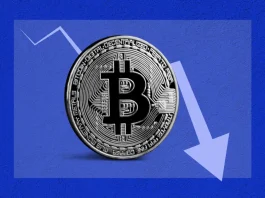The cryptocurrency Bitcoin is undergoing a technical change in late April, and some traders speculate that the change may help boost the price of the world’s largest cryptocurrency. Known as a “halving,” this change reduces the rate at which Bitcoin miners can produce new coins.
Here’s how the Bitcoin halving may impact the crypto’s price and what investors should know.
What is a Bitcoin halving?
Bitcoin is a cryptocurrency that exists only digitally, and it’s managed by a series of networked computers that track, manage and issue the currency. This network verifies transactions using the currency, ensuring the integrity of the system and ownership of the coins. New bitcoins are issued when high-powered computers called Bitcoin miners process complex math problems.
The reward for solving these math problems is predetermined, set into the computer code governing Bitcoin when it was established. As part of that reward schedule, the reward rate is cut in half every four years – called a halving – with events in 2012, 2016, 2020, 2024 and so on.
So miners receive fewer and fewer bitcoins over time as they solve these complex problems, until Bitcoin’s total issuance of 21 million coins is reached, in approximately the year 2140. So far about 19.7 million bitcoins have been issued, according to CoinMarketCap.com.
At the start of 2024, Bitcoin miners received 6.25 bitcoins for correctly solving a problem and adding a block to the blockchain. Following the halving in April 2024, they earn just 3.125 coins. This change slashes the payout to successful miners from about $400,000 to about $200,000.
This series of halvings will continue in the future, further reducing the issuance of new coins.
What does a Bitcoin halving mean for traders?
The slowing issuance of new bitcoins through a halving highlights the fundamentally deflationary nature of the cryptocurrency. With a fixed issuance of just 21 million coins – including millions that are presumed lost forever – Bitcoin is deflationary. That is, because supply is relatively fixed in the short term, its price in dollars is apt to go up as long as demand for the crypto rises.
Short-term traders looking to play the halving may find it especially tricky, because the excitement about the event may have already been factored into the price – even months ago.
Markets are forward-looking, often anticipating events well before they emerge into the financial press. For example, in the months leading up to the official approval of Bitcoin ETFs in January, Bitcoin soared. And the halving is the definition of an event that has been long known.
The halving itself doesn’t introduce new information or otherwise adjust the issuance rate of new bitcoins other than what’s already been established in Bitcoin’s code. It’s a “known known” and so may well have been factored into the price a while ago.
In the short term – and especially with an asset that is completely driven by sentiment – the price can do anything. However, Bitcoin tends to rise and fall with changes in risk appetite, especially if it’s driven by interest rates. Anything that raises traders’ “animal spirits” and gets them buying more bitcoins directly or via Bitcoin ETFs is prone to juice the price of Bitcoin, too.
So anyone who is predicting a price target on Bitcoin or any other purely speculative asset is just guessing. Because Bitcoin is not backed by anything fundamental such as the cash flow of an underlying business, its price is driven finally only by changes in sentiment – nothing else.
So for the price of Bitcoin to rise, more traders and more money have to flow to the asset. That’s what investors call the “greater fool theory of investing,” since the only way to make money is to sell it to someone who’s more optimistic than you are. This lack of a fundamental backing is why legendary investors such as Warren Buffett won’t touch Bitcoin or other cryptocurrencies.
A more interesting question is whether Bitcoin has staying power in the long term. While its deflationary and volatile nature makes the coin unusable as a currency, it may still be able to act as a long-term store of value, if enough people decide that it can retain its value.
The answer to this question relies exclusively on whether money continues to flow to the crypto. Given the fixed issuance of Bitcoin – and the rising difficulty of mining new coins as part of this halving and later ones – any increase in money flowing to Bitcoin will tend to raise its price.
The key thing to watch long term is how much money – especially how much institutional money – flows into Bitcoin and Bitcoin-related assets such as funds. From this perspective, the halving is a non-event, though it may buffet Bitcoin’s price higher or lower in the short term.
Does a Bitcoin halving affect the crypto’s fundamental value?
Bitcoin is not backed by the assets or cash flow of some underlying entity, unlike a stock, which is a fractional ownership interest in a business. So Bitcoin has no fundamental value by its very nature. Its price is supported only by traders and others who buy the crypto coin in the hope of selling it to other traders, who are also hoping to sell it to still other traders for a profit and so on.
So a Bitcoin halving cannot affect Bitcoin’s fundamental value because it has none to begin with. Again, the only way that Bitcoin has a price is because traders decide that it’s worth something.
Of course, the halving has some effects on the Bitcoin ecosystem. For example, the reduced reward for miners means that Bitcoin’s price will need to rise over a longer time frame for miners to continue mining profitably. In the short term, that may do little to Bitcoin’s price, but may encourage miners to produce less until the price rises to at least meet their cost of production.
That’s not to say that a halving won’t raise the price of Bitcoin. A halving may highlight the falling rate of issuance of Bitcoin, drawing more money to the sector as traders anticipate a change in sentiment in the market and expect a run-up in the crypto’s price. But the key driver is more money moving to the sector, not a fundamental change to the value of Bitcoin itself.
It’s worth reiterating that supply issues – more or fewer total coins, for example – are not the key driver of crypto prices. Demand is the only ultimate driver of crypto prices. If demand dried up overnight, crypto assets would be worthless, regardless of how plentiful or limited their issuance.
Bottom line
Those looking to trade the Bitcoin halving may find themselves on the wrong side of a move because the market may have already priced in any changes in sentiment well ahead of time. Those who believe that Bitcoin remains an attractive long-term investment, however, should watch ongoing flows into the asset while understanding the significant risks of owning it.
Editorial Disclaimer: All investors are advised to conduct their own independent research into investment strategies before making an investment decision. In addition, investors are advised that past investment product performance is no guarantee of future price appreciation.



